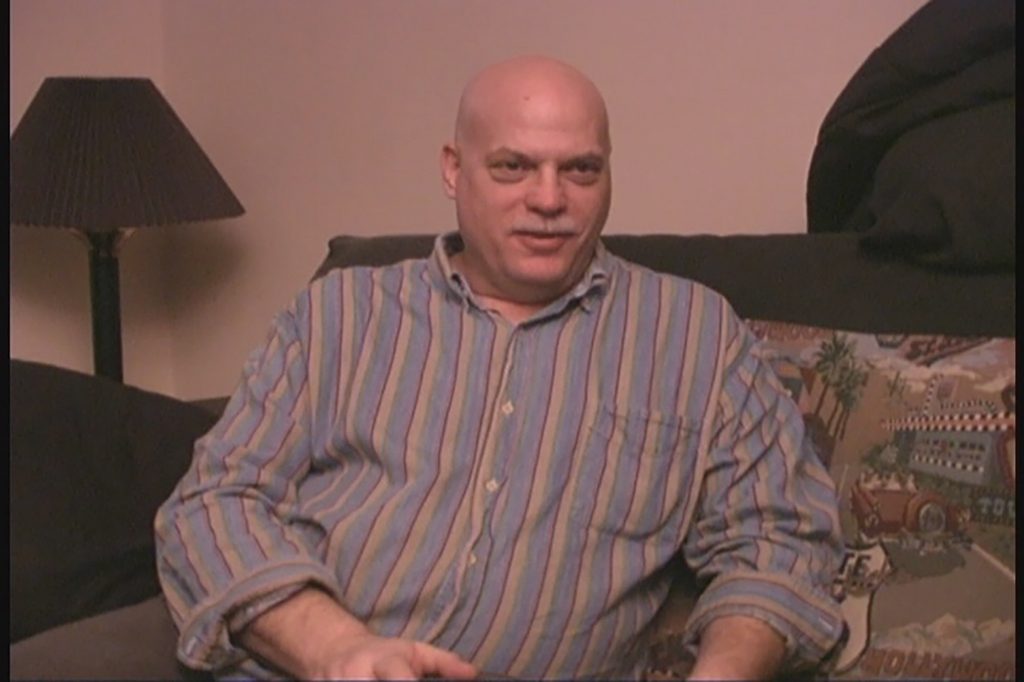
This weblog post is published on the 42nd anniversary (2020-02-16) of the opening of the CBBS (1978-02-16), the world’s first bulletin board service. It also commemorates the life of Randy John Suess (1945-01-27 – 2019-12-10). Born in Skokie, Illinois, Suess served for two years in the U.S. Navy, before attending the University of Illinois at Chicago Circle. He worked for IBM and Zenith.
In the 1970s, Suess was an amateur radio operator, with call sign WB9GPM. He was an active member of the Chicago FM Club, where he helped with maintenance on their extensive radio repeater systems.
However, Suess is most famously remembered as the co-founder and hardware developer of the first bulletin board system (BBS), along with partner and software developer Ward Christensen (1945 – ). They met as members of the Chicago Area Computer Hobbyists’ Exchange, or CACHE about 1975. Development of the BBS started during the Great Blizzard in Chicago, and was officially online (an expression not used at the time) as CBBS = Computerized Bulletin Board System, on 1978-02-16.
The early development of this and other bulletin board systems is documented in a previous weblog post, and more extensively in BBS: The Documentary an 8-episode documentary series created by computer historian Jason Scott, made from 2001-07 to 2004-12.
The CBBS consisted of a S-100 computer with an 8-bit, ca. 1 MHz processor, 64kB RAM and two single-sided 8″ diskettes each holding 173 kB formed the basis of the system, along with a Hayes MicroModem 100 running at 300 baud. The operating system was CP/M, but it ran other software was written in 8080 assembler, and automatically loaded whenever someone dialed in at: 312-545-8086.
Attention to detail was important for the survival of the system. The floppy disk drive motors ran from mains electricity, and quickly burned out if left on. So the system was modified by Suess to turn itself on when the phone rang, and to keep going for a few seconds after the caller had finished to let the computer save its data, and then quietly go back to sleep. A unique feature of CBBS, was that if callers typed inappropriate words, these would be recognized and the system would log the caller out. Entering too many unproductive keystrokes would have the same effect.
Suess hosted CBBS, because his house in the Wrigleyville section of Chicago could be called without paying long-distance charges by anyone in Chicago. By the time the system was retired in the 1980s, its single phone line had logged over 11 000 unique users, and received more than 500 000 calls. A version of CBBS has run periodically, more than forty years after its inception, demonstrating the state of technology at the end of the 1970s.
Because of his interest in Unix systems, in 1982 he created the world’s first public-access Unix system, then called “wlcrjs”. In 1984 this became Chinet (Chicago Network), which connected to the internet through a satellite radio. It ran on one of the earliest Compaq portable machines, with a 4 MHz 8088 processor, 640kB of memory, and a 10 MB hard drive.
In the early days of Chinet, the Internet was still a research tool, unavailable to the general public. E-mail and newsgroup accounts were obtained from a university computer or a BBS-like system. There were no ISPs (Internet Service Providers). E-mail and newsgroup postings were relayed from one computer to the next using UUCP (Unix-to-Unix Copy), a suite of computer programs/ protocols allowing remote execution of commands and transfer of files, email and netnews between computers, mostly at night, mostly over regular telephone lines at 1200 or 2400 Baud. The entire content on the internet was so small that it could be downloaded in a single evening. This meant that Chicago area users could browse a global collection of data without paying long-distance telephone rates.
In the late 80’s, Chinet had 12 dialup ports for between 300 and 600 active users. Later these were replaced with 22 phone lines that connected to a bank of modems, operating at considerably higher speeds. Eventually, the UUCP model became obsolete, with more companies getting direct Internet access, and ISPs offering inexpensive access to consumers. Chinet’s dial-up port usage started to decline.
Chinet then started using PicoSpan to replace its BBS software. Eventually, yapp (Yet Another Picospan Program) replaced PicoSpan and remained in use until Chinet migrated from Unix shell-based access to web based interfaces in the late 1990’s.
Despite a fire in 1996-05, Chinet still exits today, entirely web-based, running Simple Machines Forum software on a Debian GNU/Linux system.
Suess was married twice, first to Agnes Kluck and then to Dawn Hendricks, both marriages ended in divorce. He had two daughters, Karrie and Christine and one son, Ryan.
Randy Suess died 2019-12-10 in Chicago, Illinois. Currently, CBBS is operative, with information available about Randy Suess and his death.
Full disclosure: I am a registered user of CBBS/ Chinet, Chicago. Update: I am also an amateur radio operator with callsign LB2XJ.

